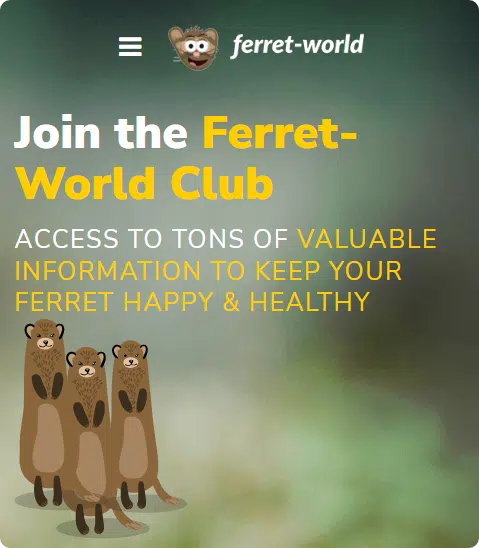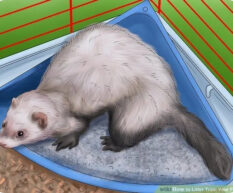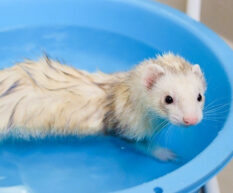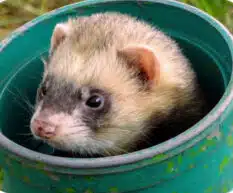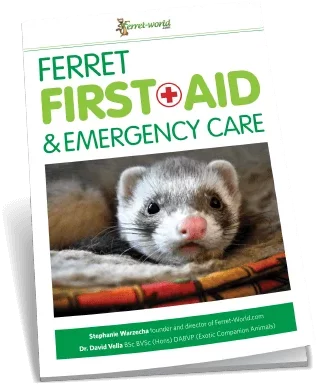Ferret News
Raw food diet causing “Paper Bone Disease” in baby ferrets in the Czech Republic: An interview with Dr. Linda Viteznikova
By Stephanie Warzecha
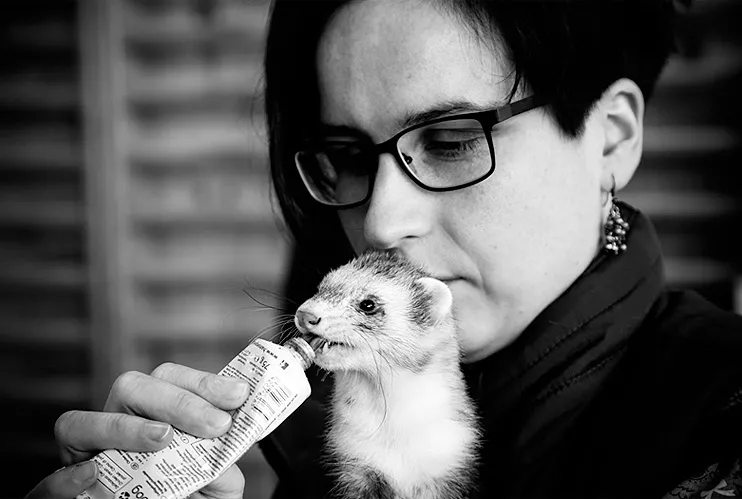
Dr. Linda Viteznikova is a veterinary practitioner from the Czech Republic specializing in ferrets.
I first met Dr. Linda Viteznikova at a ferret show in Prague in the Czech Republic. She was introduced to me by a friend there as “the best ferret vet in the Czech Republic” and as soon as we started talking, I could sense her incredible knowledge and passion for ferrets and their health and wellbeing. She is a lover of ferrets and a ferret owner herself. Her insights were invaluable and I’m honoured to have her answer a few questions for us in this “Ferret Diet” edition of Dook Dook Ferret Magazine.
Can you tell us about baby ferrets suffering from a bone disease while on a raw food diet?
The affected ferrets (more than one litter, from multiple owners) were suffering from “Paper Bone Disease” also known as Secondary Nutritional Hyperparathyroidism (NHS), which is caused by low-calcium high-phosphorus diets (typically all meat diets – meat is rich in phosphorus and low in calcium). An excess of phosphorus and insufficiency of calcium in the diet leads to decalcification of bones.
Ferrets are unable to synthesize vitamin D3 (cholecalciferol) from sunlight (like us humans do) and need to be able to obtain it from their diet. Normally, vitamin D3 is absorbed intact from the intestine in association with dietary fat. A body must have adequate levels of vitamin D3 in order to absorb calcium and promote bone growth.
So essentially, this disease is caused by the inadequate nutrition of baby ferrets. I have observed this in multiple baby ferrets that have been fed a raw food diet here in the Czech Republic.
Here is how it works: An organism is trying to reach the balanced level of calcium in the blood, normocalcemia–the presence of a normal concentration of calcium in the blood, in order to help with the formation of teeth and bones, amongst many other important functions in the body. 99% of the calcium in an organism is stored in the bones. Therefore, when an organism requires calcium for the many functions it performs, it is mobilized from the bone.
Naturally, in non-mature ferrets (or even in weaned ferrets) there’s a lack of calcium in the skeleton that could be mobilized, because their bones are not properly developed yet.
In the end, this leads to pathological fractures of long bones or impression fractures of the spinal vertebrae. We can easily prevent this serious problem by feeding our ferrets (the babies first and foremost) balanced and completed foods.
What diet do you recommend, based on your findings, for baby ferrets?
I highly recommend a complete high-quality dry food (for babies it can be moistened) with high-quality protein and fat in order to balance phosphorus and calcium ratios.
For weaning ferrets and for babies we can use a complete dry food with protein around 45% and fat more than 23%.
What do you think about ferrets, in general, being fed a raw food diet? In your opinion, is there a right way of having ferrets on a raw food diet?
In general, a raw food diet is not a wrong way to feed your ferret. But it has to be a really natural prey diet consisting of whole (!) rodents (mice, rats, rabbits, guinea pigs–adult ones, not newborn white mice, which still have the same problem with low calcium and high phosphorus; birds; and frogs. A lot of planning, preparation, and knowledge goes into feeding a whole prey diet.
Be honest with yourself. Are you able to keep a “whole prey diet” for your ferret at home? Or are you able to collect frogs and birds in the nearest woods? I love my ferrets and I’m really not able to provide this. So my choice is a commercially balanced high-quality dry food.
What are common mistakes you see people make when feeding a raw food diet?
People usually don’t respect the nutritional needs of ferrets. They feed them nice pieces of chicken breast (no fat at all!), a lot of liver (can cause severe diarrhea), add inappropriate things like oat flakes to the food (a lot of fibre and usually a lot of phosphorus), or other non-ferret appropriate foods. Some even feed fruit and vegetables, which usually contain a lot of sugar and are linked to the development of insulinoma.
If a ferret owner is going to feed a raw food diet, they need to do a lot of research on this before even attempting it, or it could have detrimental effects.
What should people look for in food if they feed ferrets on a kibble/ commercial diet?
In commercial diets look for
- High levels of protein, typically at least 40%
- High level of fat, no less than 20%, especially if the food is lower in protein
- Low fibre level, around 3% or less
- Ingredients: Look for animal sources, such as chicken, duck, salmon, and kangaroo, not soya or corn proteins
*Please note: In the photo (in this article) Dr. Linda is feeding her ferret a fish paste which was a common treat to give ferrets in Europe at the time of writing this article (and when the photo was taken).
This article originally appeared in Dook Dook Ferret Magazine Issue 2. For information on how to receive 6 issues per year of the Digital Magazine + get extra bonuses please check out the Ferret-World Membership
